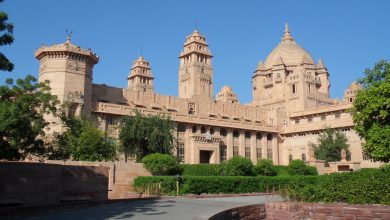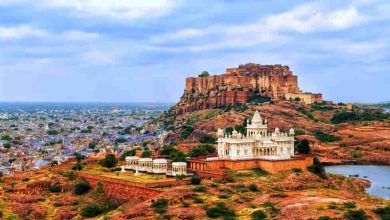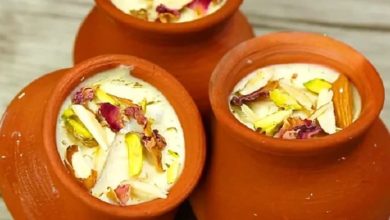Mehrangarh Fort is one of the most popular forts in India and also happens to be one of the biggest in the country. It is also popularly known as the Mehrangarh Kila among the locals. It was constructed on the Bhakur-Cheeria, the literal translation of the word being ‘Mountain of Birds’. This is one of the most glorious forts in India that people crave to see. When the sunshine hits the place, it lights up like a marvel and the ethereal charm is definitely unbelievable. We think that is why English novelist and short-story writer, Rudyard Kipling once said that the fort-palace may have been built by Titans and coloured by the morning sun!
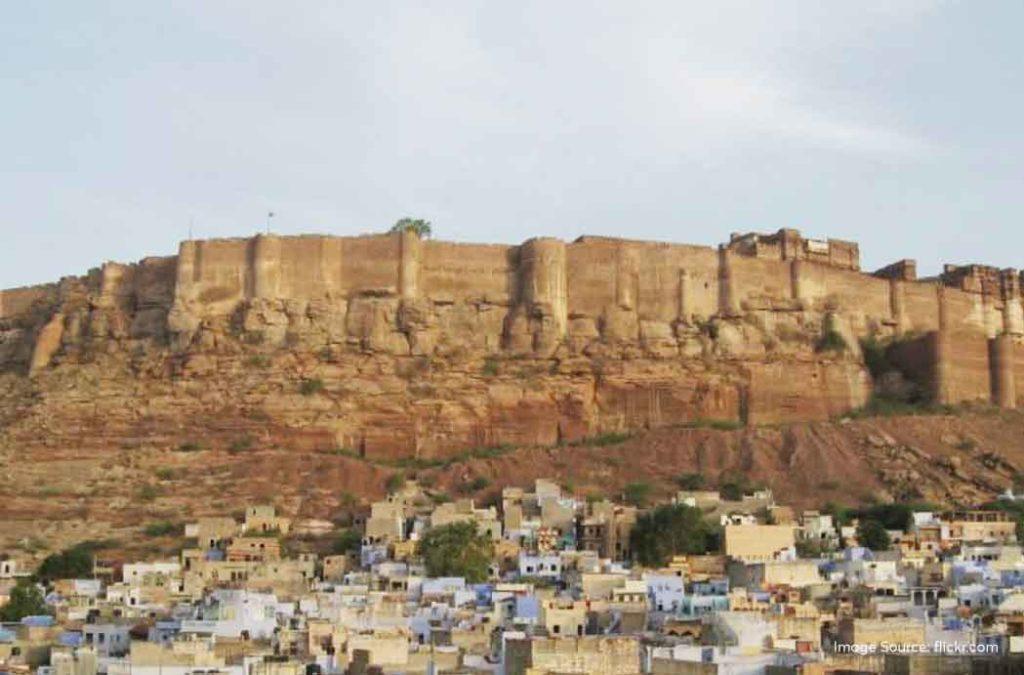
There is so much more to Mehrangarh Fort than its beauty. Some very interesting stories and legends surround the place. Without any delay, let us learn more about the history, architecture and places to explore near the Mehrangarh Kila!
History of Mehrangarh Fort
The history of Mehrangarh Fort dates back to the 15th Century. The Rathores used to rule the Marwar region during that time period. The then ruler, Maharaja Rao Jodha, decided that he would shift his capital from Mandore to a more secure location, Jodhpur. He decided to build a fort palace on the Bhakur-Cheeria and named it Mehrangarh Fort. The word Mehrangarh can be divided into two distinct words – ‘Mehr’ which means ‘sun’ and ‘Garh’ which means ‘fort’. ‘Mehr’ can also mean ‘blessing’.
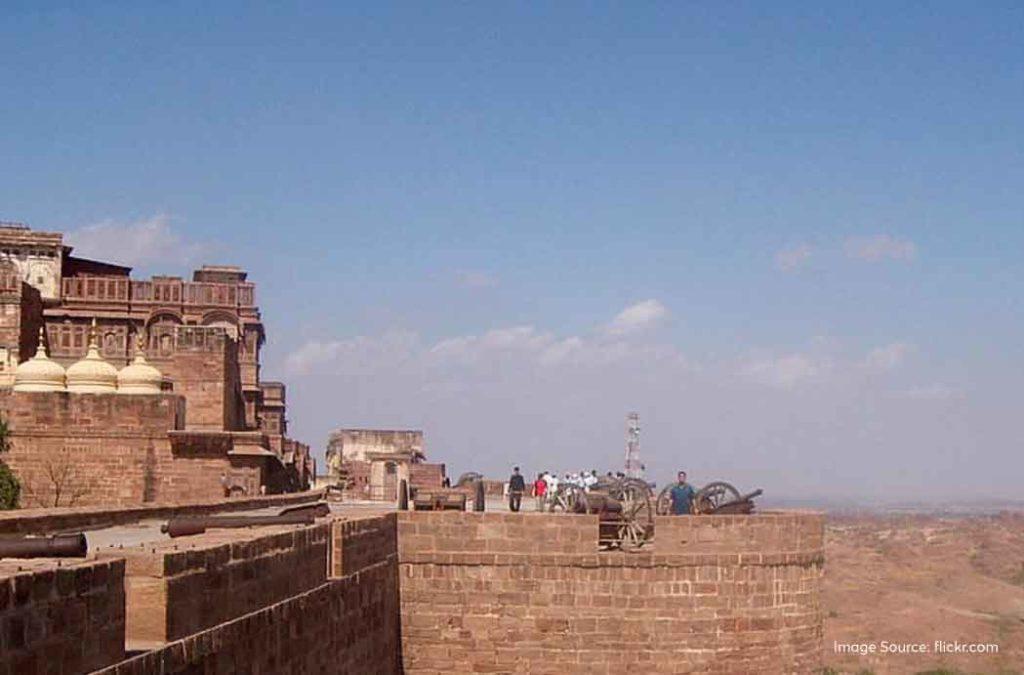
The fort was founded in 1459 and Maharaja Rao Jodhaa chose the elevated location purely for its strategic advantage and natural defence. The fort is at a height of 410 ft. We cannot say that the fort was built for a certain duration only because all the successive rulers after Rao Jodhaa expanded the fort to add more architectural elements to it. Mehrangarh Fort did a great job of keeping the kingdom safe from enemies. The fort also faced a few wars and one of the prominent wars was the ‘Siege of Mehrangarh’. It happened in 1807 when the Jaipur army surrounded the fort and stayed there for almost 6 months in hopes of concurring the palace. But, it did not happen. Mehrangarh Fort kept its rulers and its people safe. For over 500 years, the Fort stood as an important structure in the capital of Marwar.
When you go on a trip to visit the Mehrangarh Kila, this is one story the locals or the tour guides will not shy away from telling you.
Legend of Mehrangarh Fort
It is said that Bhakur-Cheeria used to be the home of a hermit. When the hermit learned that the king was planning to build a fort on the hillock, he was not happy about it because this would disrupt his living. He was called Cheeria Nathji which translates to the ‘Lord of Birds’. The king took the help of Karni Mata, the warrior goddess, to persuade the hermit to leave the place. He respected the request of the deity but while leaving the place, he cursed the king that the fort and the region would always face drought. The Maharaja apologised to the hermit and also arranged for a house and temple near the same place that the hermit used to live in before. However, the curse cannot be taken back. A human sacrifice is needed to reduce its effects.
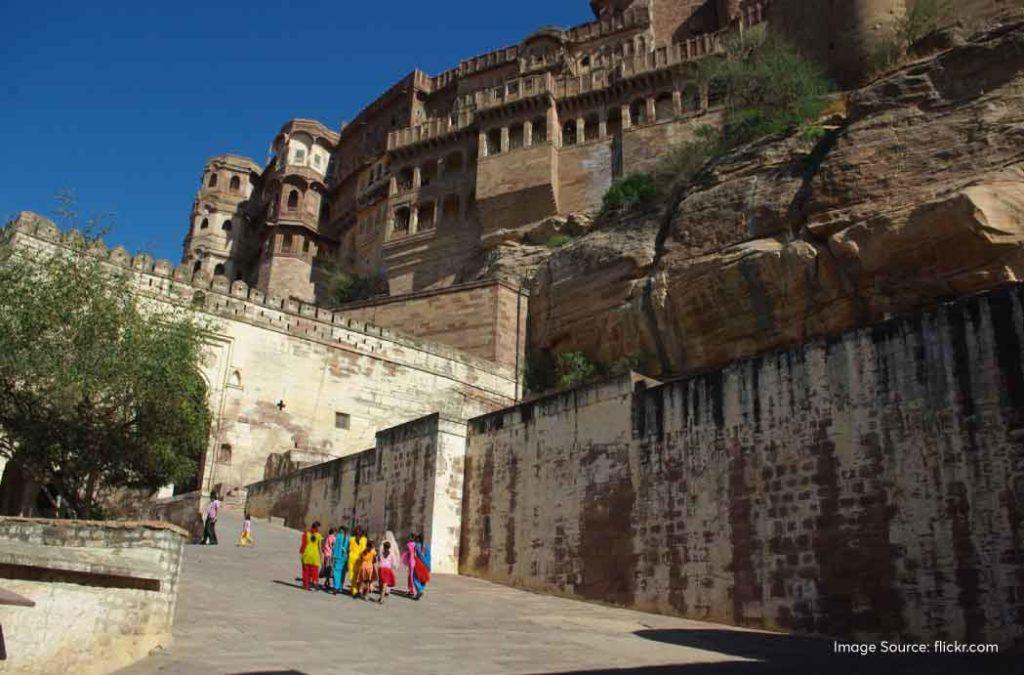
That was when Raja Ram Meghwal, a resident of Jodhpur, came forward to sacrifice his life and requested that the king always take care of his wife and children in return. He was buried alive where the Mehrangarh Fort now stands. Some also say that the fort’s four pillars in the four corners have four human dead bodies buried as a form of human sacrifice.
Architecture of Mehrangarh Fort
It is hard to say that the Mehrangarh Fort follows a particular type of architectural style. Several rulers expanded the place and each of them added their own touch of beauty and charm to the place. There are constructions within the palace that celebrate the Rajasthani craftsmanship while there are other parts that look similar to the Mughal architectural style. You will see everything from the old architectural layouts to the fairly modern interiors.
The fort has walls that have a height of about 120 feet and a width of about 70 feet. There are seven gates, each leading into a courtyard. There are temples in the complex that are built in the Rajasthani style using sandstones and people still come here to offer prayers. Majorly, the fort-palace was built using red sandstone but you will occasionally find structures made with marble. There are jhalis or window screens with intricate flower carvings of sandstone. These were the viewpoints for the ladies of the past, to see whatever was going on in the courtyards.
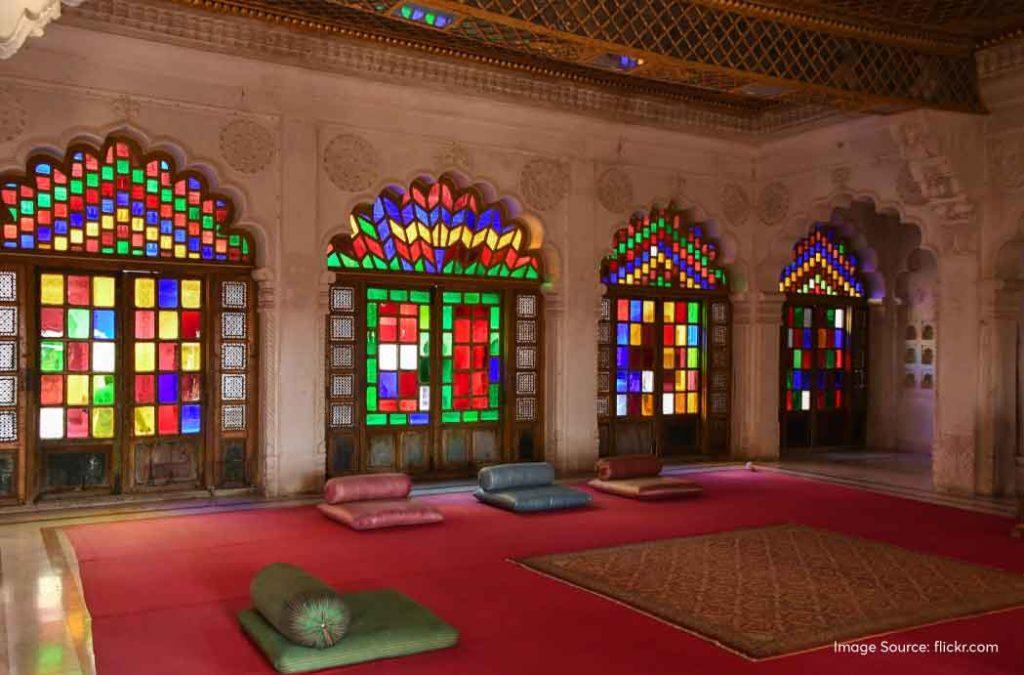
The seven entrances or the seven gates of Mehrangarh Fort are named –
- Jai Pol or the entry gate – The main entrance of the fort which has the Chhatri of Kirat Singh Sodha.
- Fateh Pol or the victory gate – It was built to celebrate the victory of Rathores against the Mughals in 1707.
- Gopal Pol – Doors with huge spikes meant for added security.
- Dedh Kangra Pol – A gate with circular depressions in the walls because of the attacks the fort endured in the past. Apparently this is the place where Raja Ram Meghwal was buried.
- Maruti Pol – A beautiful arched entrance
- Loha Pol – An iron gate with spikes. This is one of the most interesting gates so far. Here, you will find handprints of 16 women who committed Sati. 5 pairs belong to the Queens of Maharaja Ajit Singh while the others are of the concubines.
- Suraj Pol – The innermost gate that leads to a vast courtyard.
Inside, you will also see the Shringar Chowk where a white marble throne stands. This is where the coronation ceremonies happened. You can explore the ancient palanquins, hookah corners where the kings spent their leisure time and a treasure room among other things in the fort.
Timings and entry details
Mehrangarh Fort timings are from 9 AM to 5 PM on all days. The entry ticket will cost you anywhere between INR50 to INR 100 depending on weekdays, weekends, national holidays, festivals and events.
Festivals celebrated in the fort
Rajasthan International Folk Festival
One of the main festivals celebrated in the Mehrangarh Fort is the Rajasthani Folk Festival. It takes place in October month every year, on a full moon day. It is a celebration of traditional art in the form of music and dance.
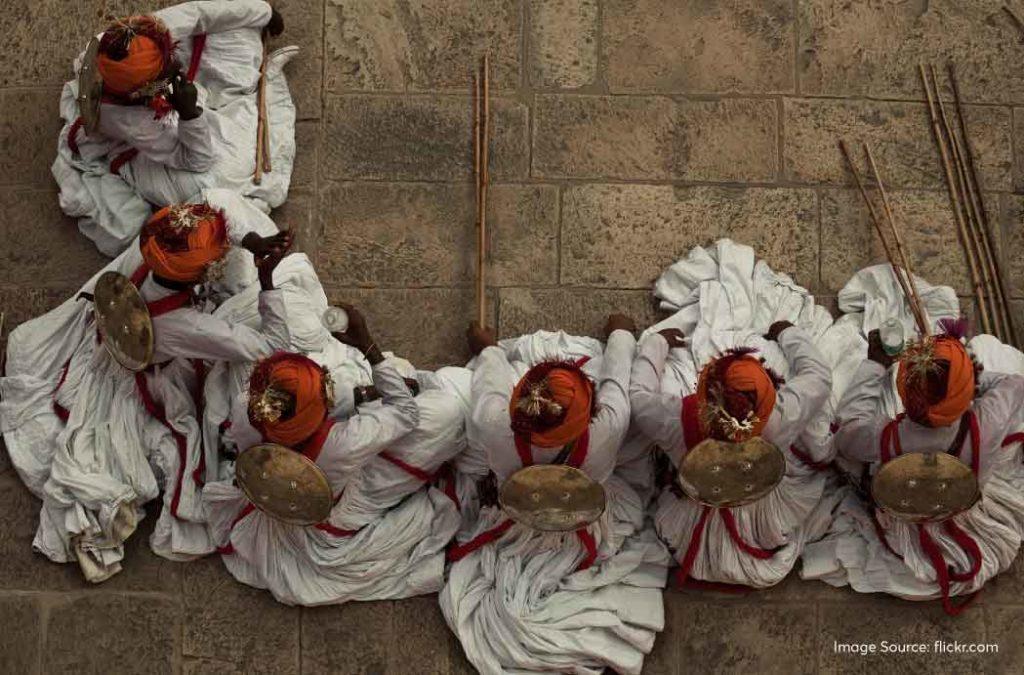
The government of Rajasthan started this initiative to promote the talent of the local artists and they’ve also gained support from UNESCO to do the same! It is a worthwhile experience to see the artists perform in the backdrop of the dazzling royal fort.
Places to Explore In and Near Mehrangarh Fort
Mehrangarh Fort Museum
The fort museum houses some of the best artefacts that were preserved from the bygone era. Here, you can see palanquins that the royals used to move from one place to another, even the small palanquins that the females used to go from place to place within the stretch of the fort.
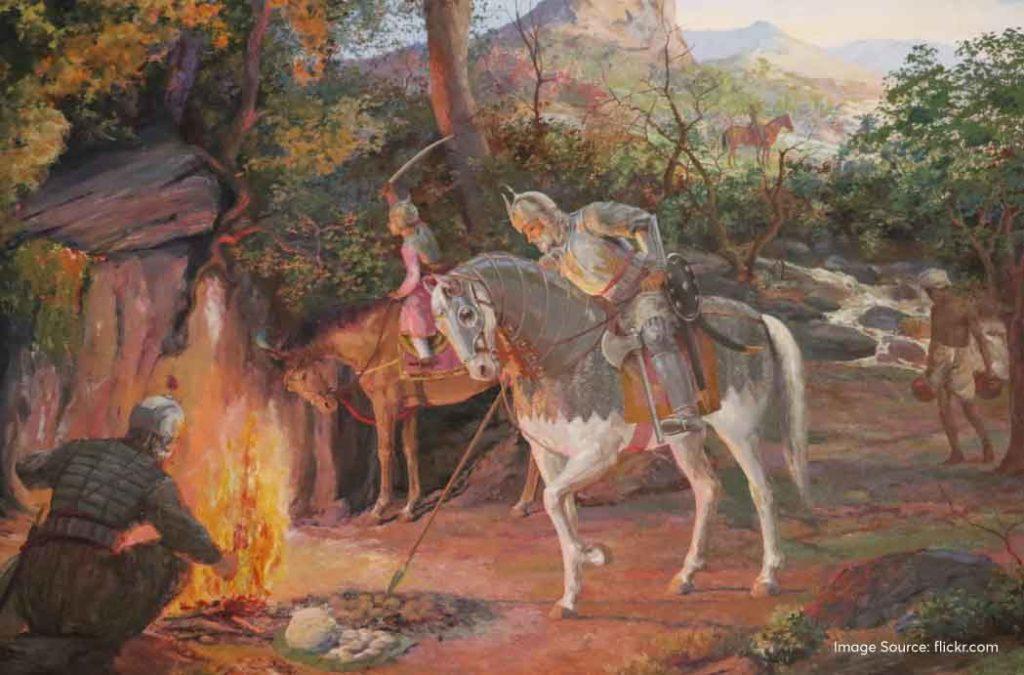
There’s this one palanquin that the royal family used to travel with grand processions and that will remind you of palanquins from the Mysore Palace in South India, with the same golden touch to it.
There is an arm gallery displaying weapons, a gallery to show utensils and hookah sets used, artistic shields, jewellery boxes, a paintings gallery and a textile gallery that you can explore inside the Mehrangarh Fort.
Sheesh Mahal
The Sheesh Mahal is a very beautiful part of the Mehrangarh Fort. Its structure looks very similar to what the Mughals used to build in that era. It is not possible to directly enter the palace space, but there is a small opening or enclosure through which you can see the interiors.
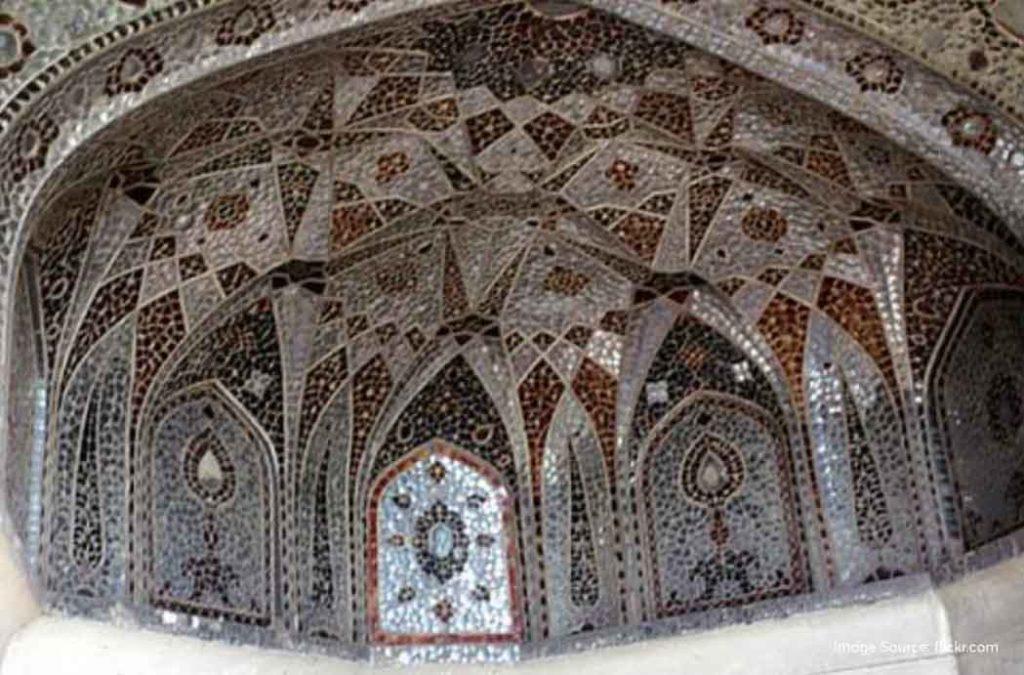
You will notice that the walls have pretty flower motifs and depictions of Indian mythological stories in the form of paintings. This colourful artwork reflects off of the mirrors and creates a stunning image for the ones seeing it.
Jhanki Mahal
The Jhanki Mahal is the place where the royal ladies gathered with their friends or maids. There are windows that overlook the courtyards so that the females can see what is happening in the fort.
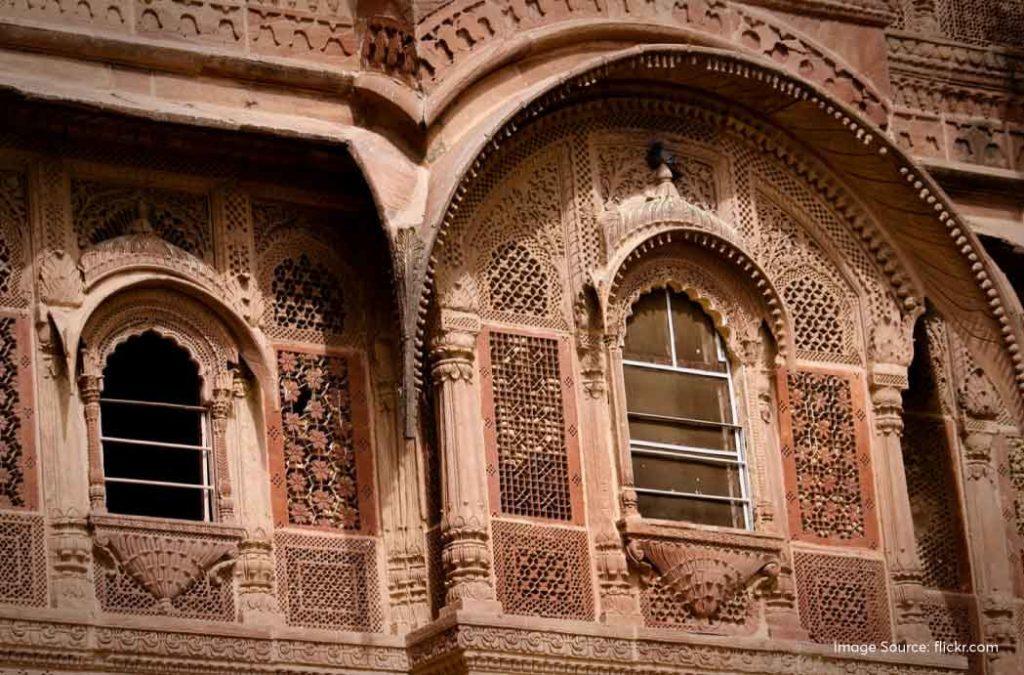
You will also find royal cradles where the queens must have put the royal children while they chatted and smiled with their ‘sahelis’.
Phool Mahal
Phool Mahal or the ‘Flower Palace’ was the gathering spot of the men, much like the Phool Mahal was for the ladies.
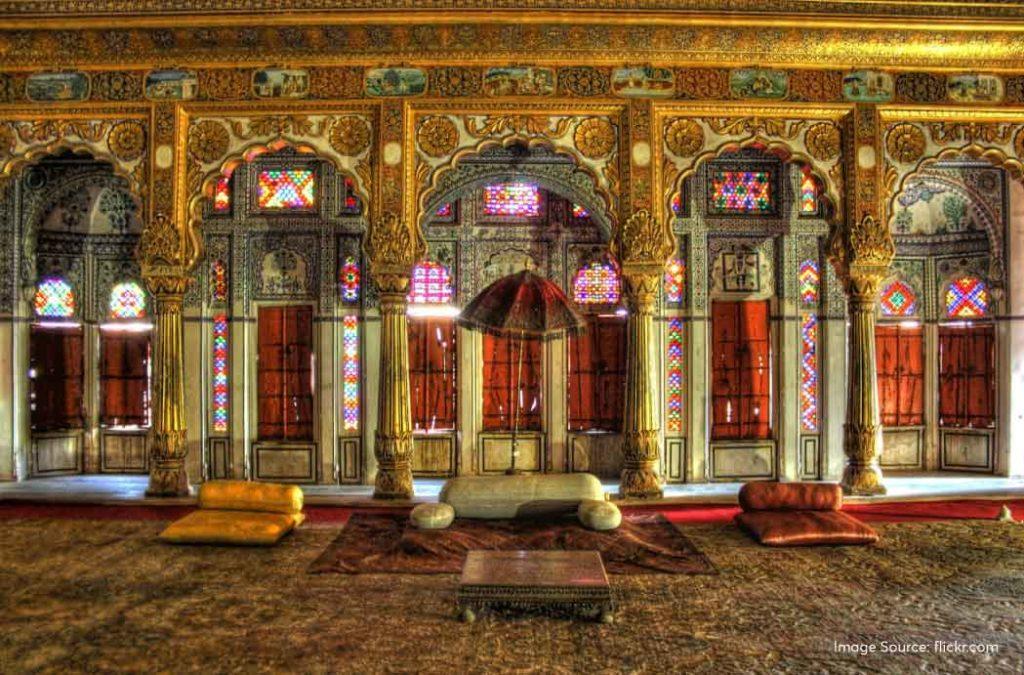
Here, you can see the walls with intricate paintings, portraits of the Maharajas of the past and also the royal seating arrangement where men sat down, discussed things, ate their food or even enjoyed entertaining activities like seeing the courtesans and dancers sway to the tunes of traditional music.
Chamundi Mataji Temple
The Chamundi Mataji temple is one of the main shrines that people still visit in the Mehrangarh Fort. The idol in the temple was brought by Rao Jodhaa when he shifted from Mandore to Jodhpur.
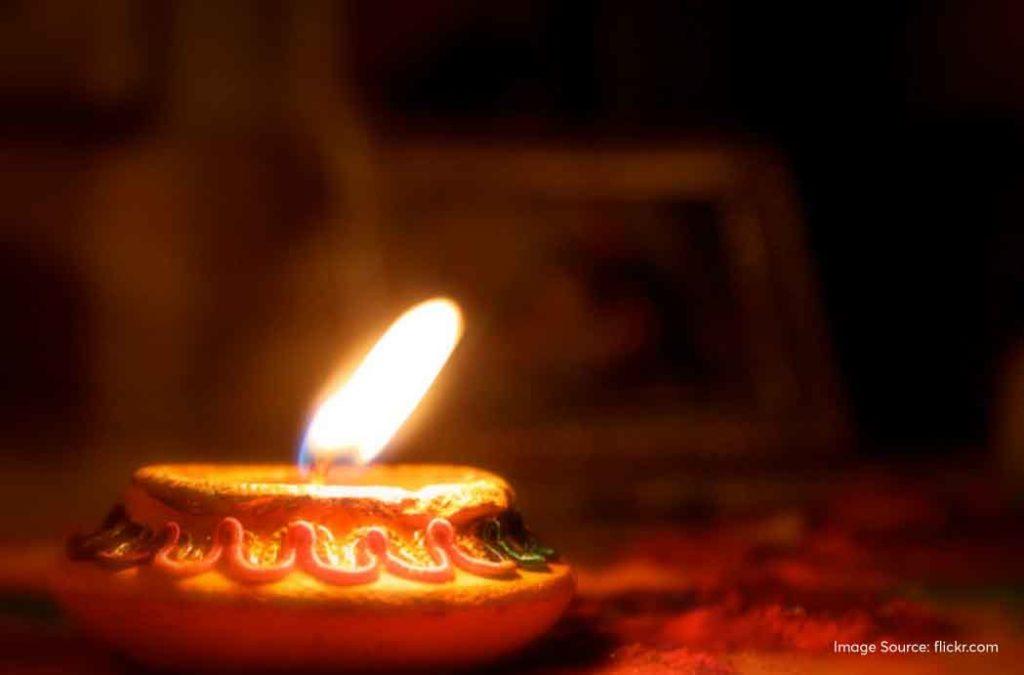
It was the first holy object placed on the premises of the Grand fort-palace. Daily prayers and festive ceremonies happen at this temple and the locals revere the goddess to be their saviour.
Chokelao Mahal Restaurant
Once you are done exploring the Mehrangarh Fort, head to the Chokelao Mahal Restaurant in the evening. After the sun sets, this is the best place to have a candlelight dinner with your loved ones.
You will have the view of the illuminated Fort on one side and the panoramic view of the Jodhpur city line on the other. You can enjoy delicious Rajasthani cuisine while witnessing the night vista that will leave you impressed.
The best time to visit Mehrangarh Fort
You can visit the Mehrangarh Fort all year round. The fort remains open every day and when special events or festivals are happening, you can easily get information about the same from Rajasthan’s tourism website.
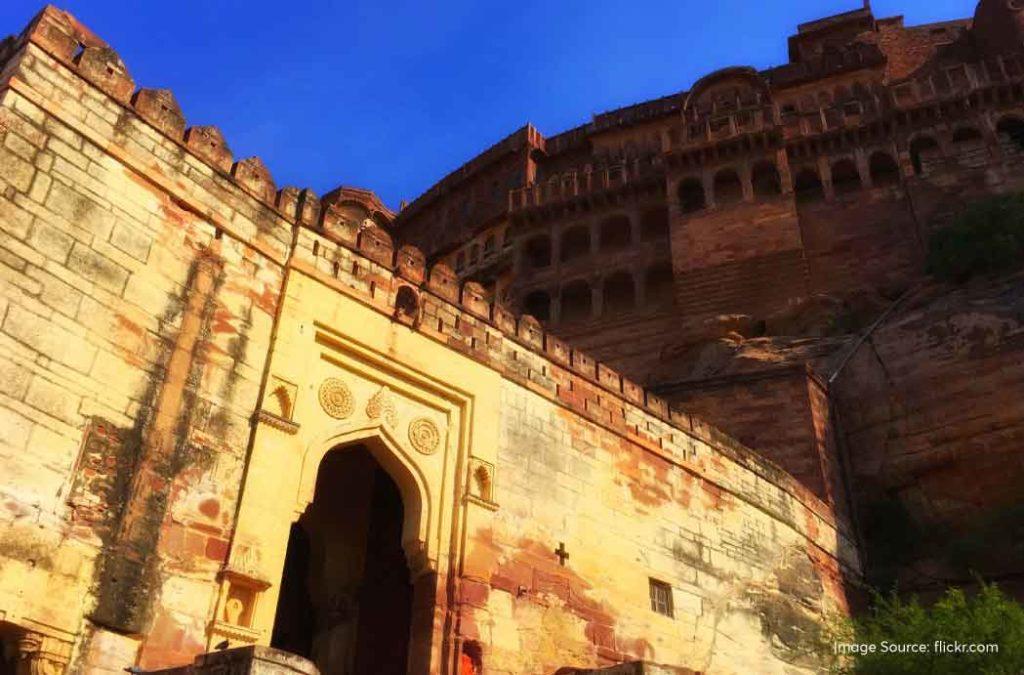
You can visit Mehrangarh Fort whenever you want, based on your personal preference. Because the scorching sun of the summer months will quickly drain one’s energy, people prefer to come to Jodhpur either in the monsoon months or in the winter. The monsoon showers in the Mehrangarh Fort are beautiful and the surroundings stand out after the summer’s dust is washed out.
Winters are cooler and provide the right environment for day-long sightseeing and exploration.
How to reach Mehrangarh Fort?
To explore Mehrangarh Fort, you must reach Jodhpur first. Then, book a hotel in Jodhpur so that you can come back to a comfortable place after your day’s activities. Here’s how you can reach Jodhpur from your city.
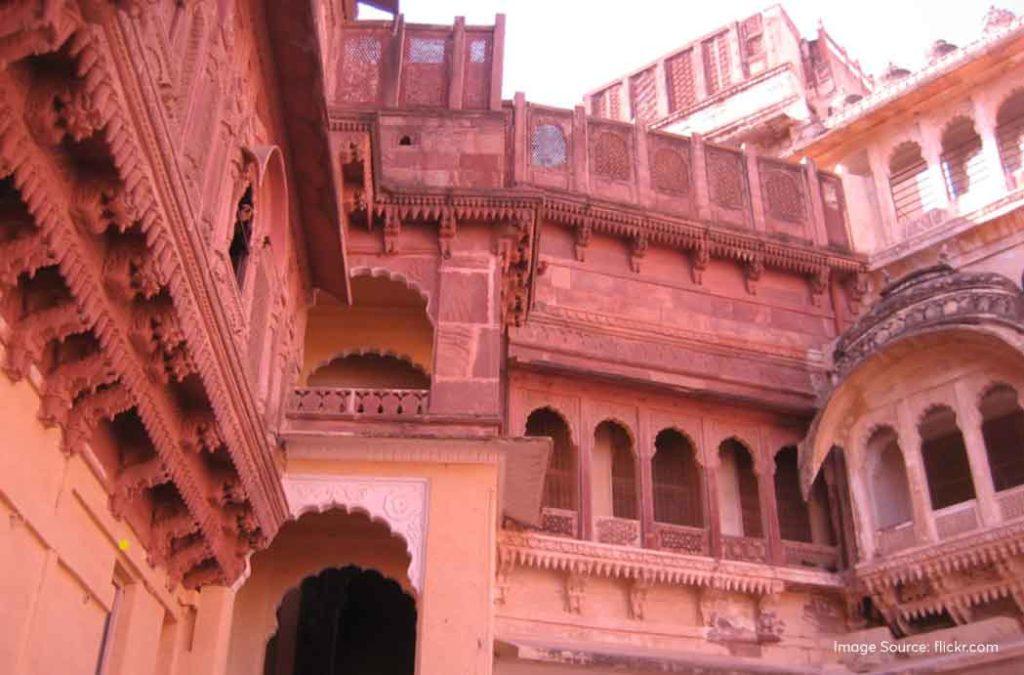
By Air
You can take a flight from your city to Jodhpur airport. This is a small domestic airport and also an air force base. If not, you can reach Jaipur and find transport to Jodhpur. The fort is about 9 kms away from the domestic airport.
By Rail
Several trains run from major Indian cities to Jodhpur railway station. You will find trains that connect Jodhpur with Delhi, Jaipur, Mumbai, Chennai and Kolkata. They run on all days of the week. The Mehrangarh Fort is roughly 6 kms away from Jodhpur railway station.
By Road
The people coming by road must aim to join NH114 to reach Jodhpur. NH114 connects most of the Rajasthani cities, towns and villages with Jodhpur. As soon as you arrive at any part of Rajasthan, you will find buses and cab services that will take you to Jodhpur or directly to Mehrangarh Fort.
Shrouded by mysteries and yet standing mighty tall even during the 21st century, Mehrangarh is a fortification that makes India proud of its heritage. It tells the tales of several kings and the sacrifices of several queens. It keeps the rich traditional art of Rajasthan alive and beckons people to explore its architectural grandeur. Plan your trip to Mehrangarh Fort soon for an enjoyable experience!
